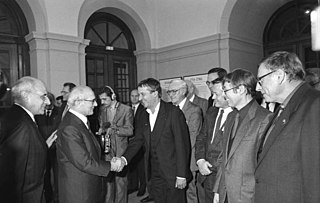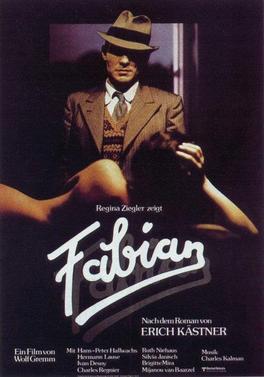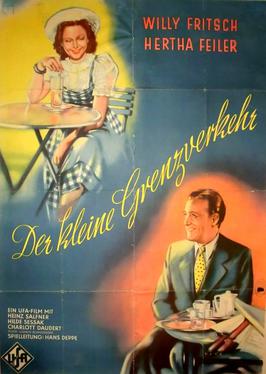Related Research Articles

Christiane Hörbiger was an Austrian stage, film, and television actress. Her first major film role was Mary Vetsera in Kronprinz Rudolfs letzte Liebe in 1955. She appeared on the stage of the Burgtheater as Recha in Lessing's Nathan der Weise in 1959, became a member of Theater Heidelberg and later Schauspielhaus Zürich. From 1969 to 1972, she portrayed Die Buhlschaft in Hofmannsthal's Jedermann at the Salzburg Festival.

Yvonne Catterfeld is a German singer, actress and television personality. Born and raised in Erfurt, Thuringia, she later moved to Leipzig to pursue her career in music. In 2000, she participated in the debut season of the singing competition series Stimme 2000, where she came in second place. Catterfeld subsequently signed a recording deal with Hansa Records, which released her debut single "Bum" in 2001. The same year, she was propelled to stardom when she was cast in a main role in the German soap opera Gute Zeiten, schlechte Zeiten. In 2003, Catterfeld made her musical breakthrough when her fifth single, "Für dich", became an international number-one hit and produced the equally successful album Meine Welt.

Lilli Palmer was a German actress and writer. After beginning her career in British films in the 1930s, she would later transition to major Hollywood productions, earning a Golden Globe Award nomination for her performance in But Not for Me (1959).

Helmut Johannes Baierl was a German playwright and vice president of the DDR Academy of Arts, Berlin. He was born in Rumburk (Czechoslovakia) and died in Berlin. He was a member of the Nazi Party from 1944 to 1945, of the Liberal Democratic Party of Germany (LDPD) from 1945 to 1947 and of the Socialist Unity Party of Germany (SED) from 1947 to 1989.

Katharina Thalbach is a German actress and stage director. She played theatre at the Berliner Ensemble and at the Volksbühne Berlin, and was actress in the film The Tin Drum. She worked as a theatre and opera director.
Gertrud Bäumer was a German politician who actively participated in the German civil rights feminist movement. She was also a writer, and contributed to Friedrich Naumann's paper Die Hilfe. From 1898, Bäumer lived and worked together with the German feminist and politician Helene Lange.

Marta Hillers was a German journalist, and the author of the memoir Eine Frau in Berlin, published anonymously in 1959 and 2003 in German. It is the diary of a German woman from 20 April to 22 June 1945, during and after the Battle of Berlin. The book details the author's rape, in the context of mass rape by the occupying forces, and how she and many other German women chose to take a Soviet officer as a protector.

Romy Haag is a Dutch dancer, singer, actress and former nightclub manager.

Rosa Valetti was a German actress, cabaret performer, and singer.

Blandine Ebinger was a German actress and chansonniere.

Fabian is a 1980 West German drama film directed by Wolf Gremm. It is based on the novel Fabian. Die Geschichte eines Moralisten by German author Erich Kästner. The film was chosen as West Germany's official submission to the 53rd Academy Awards for Best Foreign Language Film, but did not receive a nomination.

Hope Bridges Adams Lehmann was the first female general practitioner and gynecologist in Munich, Germany.

White Slave Traffic is a 1926 German silent thriller film directed by Jaap Speyer and starring Rudolf Klein-Rogge, Erich Kaiser-Titz, and Fritz Alberti. When a Berlin nightclub worker moves to Budapest to take up a job that has been arranged for her, she finds herself being kidnapped by white slave traffickers. She is eventually rescued from a brothel in Athens. The film opened with a warning from a group committed to combating white slavery, but the film's sensationalist tone provoked controversy. In Britain it was refused a licence by the British Board of Film Censors although it is possible it had some private screenings. One contemporary review described it as a "crude melodrama on an unpleasant subject".

Sophie Rois is an Austrian actress who lives and works in Berlin. She has appeared in such films as Three, 180°, Enemy at the Gates and television programmes such as Polizeiruf 110 and Die kleine Monsterin (voice).
Claudia Garde is a German film director and screenwriter. She has worked for the German TV-series Stubbe – Von Fall zu Fall, Doktor Martin, Flemming or the series Tatort.

A Salzburg Comedy or Little Border Traffic is a 1943 German comedy film directed by Hans Deppe and starring Willy Fritsch, Hertha Feiler and Heinz Salfner. Erich Kästner wrote the screenplay based on one of his own novels. As he had been blacklisted by the Nazi Party, he used the pseudonym Berhold Bürger. The novel was again adapted for the 1957 film Salzburg Stories.

Marleen Lohse is a German actress.
Fritzi: A Revolutionary Tale is a 2019 German-language animated film directed by Ralf Kukula and Matthias Bruhn about the Peaceful Revolution in Autumn 1989, told from the perspective of a twelve-year-old girl. A co-production between Germany, Luxembourg, Belgium the Czech Republic and Austria. the film is based on the 2009 German children's book Fritzi was There by Hanna Schott.
Tatjana Turanskyj ) was a German film director, producer, screenwriter and performer with feminist views.

A Wife for Three Days is a 1944 German romantic drama film directed by Fritz Kirchhoff and starring Hannelore Schroth, Carl Raddatz and Ursula Herking. It was shot at the Babelsberg Studios in Potsdam and on location around Berlin and its vicinity including the River Havel and Wannsee. Filming also took place in Salzburg and Mondsee in Austria. The film's sets were designed by the art director Erich Kettelhut.
References
- ↑ "Credits". filmportal.de . Retrieved 2016-05-26.
- ↑ "Eine flexible Frau". Turanskyj & Ahlrichs (in German). Retrieved 2022-05-21.
- ↑ Archived 2019-05-17 at teddyaward.tv (Error: unknown archive URL)